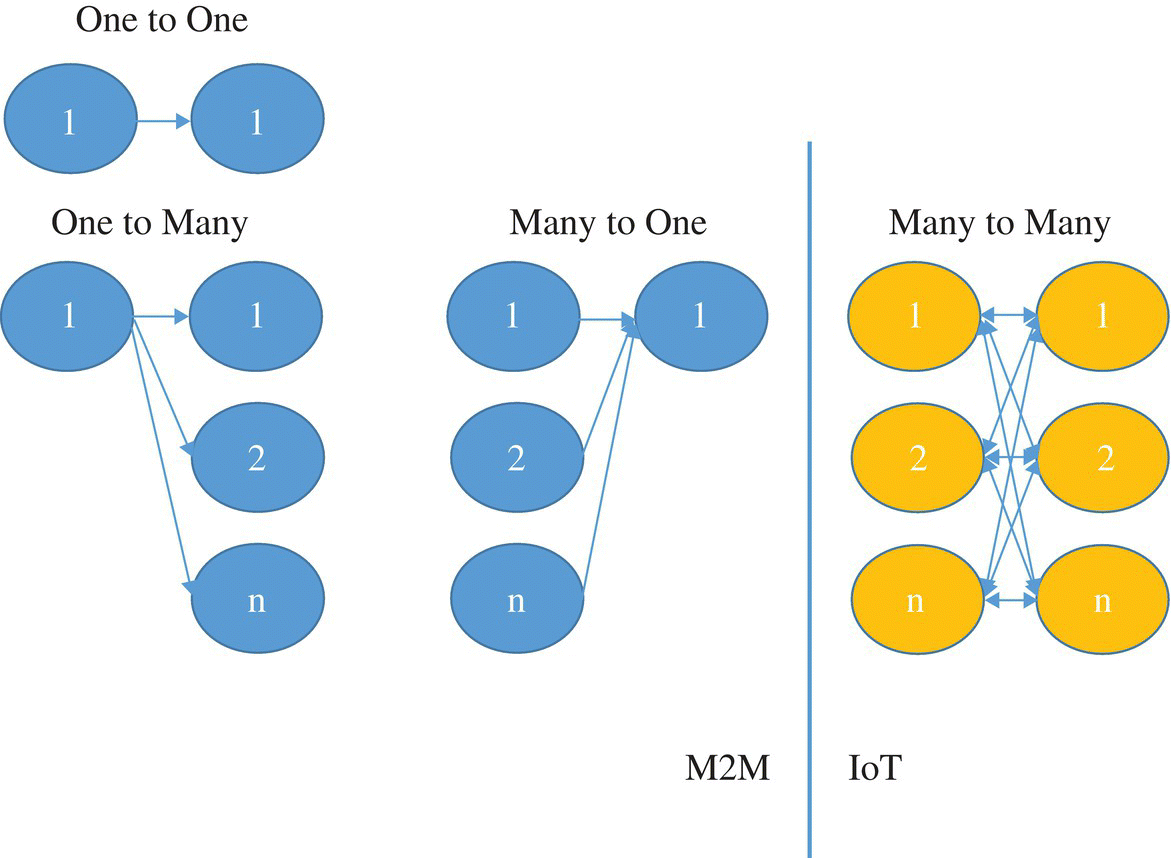Appendix AIoT (Internet of Things)
IOT Business Consultant, Ericsson, India
A.1 Introduction
The Internet of Things (IoT) is a term which is analogous in a sense to M2M (Machine‐to‐Machine) communication. However, when the difference is referred to in a reference frame of entity‐relationship diagrams, then, it becomes clear that M2M symbolises a one‐to‐one relationship between two entities or one‐to‐many relationships or many‐to‐one relationship, but, IoT symbolises many‐to‐many relationships among many entities. M2M usually does not have a Cloud‐based middle layer that crunches data coming in from devices and sensors over cellular and noncellular networks, unlike IoT. M2M addresses isolated instances of device‐to‐device communication instead. This reveals that the complexity in the real world is addressed through interoperability of mutually exclusive elements in IoT to bring in elemental interdependence, interrelatedness and interactivity together for a purpose, which often is to solve a critical technology, process or a business problem. In other words, IoT embraces diversities. In Figure A.1, M2M and IoT are represented using entity relationship diagrams.

Figure A.1 M2M and IoT representation.
A.1.1 Constituents of IoT
IoT is an ecosystem consisting of Sensors–Devices–Gateways–Networks–Tools–Cloud–Platforms–Data Analytics Engines–Partner Onboarding and ...
Get Fundamentals of Network Planning and Optimisation 2G/3G/4G, 2nd Edition now with the O’Reilly learning platform.
O’Reilly members experience books, live events, courses curated by job role, and more from O’Reilly and nearly 200 top publishers.

